Pakistan boasts stunning landscapes and rich natural beauty. Explore its majestic mountains, serene lakes, and lush valleys.
Pakistan is a treasure trove of natural beauty waiting to be discovered by nature enthusiasts. Pakistan offers diverse landscapes, from the towering peaks of the Himalayas in the north to the tranquil beaches in the south. The picturesque Hunza Valley, known for its breathtaking scenery, attracts tourists from around the world.
The serene waters of Lake Saif-ul-Malook and the lush greenery of Swat Valley provide perfect retreats for nature lovers. Adventure seekers can explore the rugged terrains of Skardu and the mystical beauty of Fairy Meadows. Pakistan's natural beauty is unparalleled, offering a unique blend of adventure, serenity, and awe-inspiring landscapes.
Majestic mountains
Pakistan boasts some of the most stunning landscapes in the world, with its majestic mountains stealing the spotlight. From towering peaks to serene valleys, the country's mountainous regions offer a breathtaking escape into nature's wonders. These mountains are not just geological formations; they are symbols of adventure, beauty, and the raw power of nature.
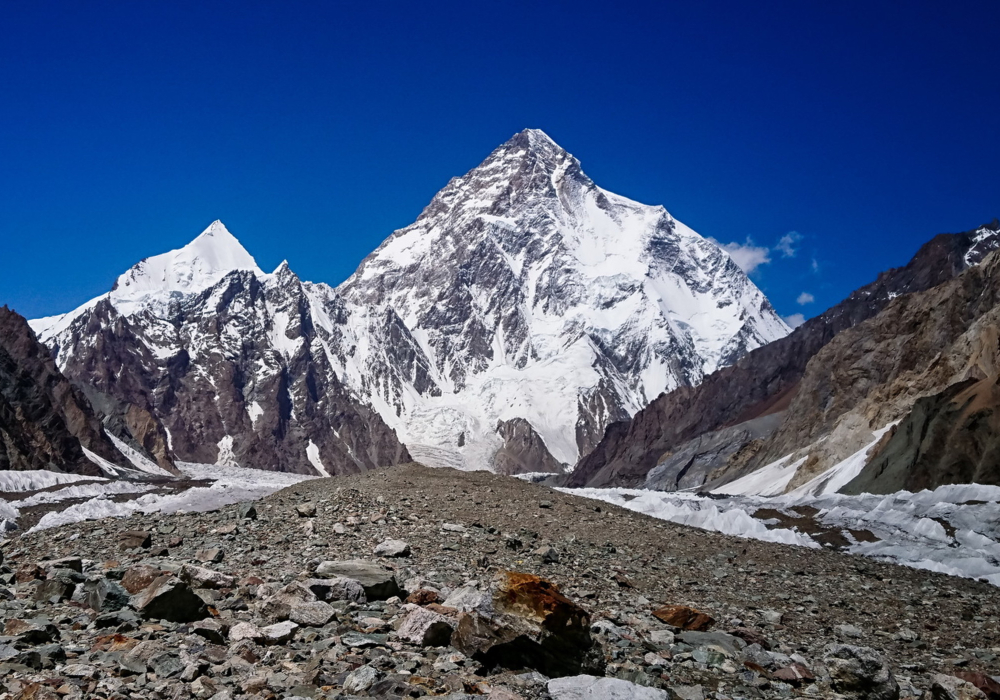 K2 and Broad Peak from Concordia in the Karakorum Mountains, Pakistan
K2 and Broad Peak from Concordia in the Karakorum Mountains, Pakistan
K2: The King of Peaks
K2, also known as Mount Godwin-Austen, is proudly the second-highest peak in the world. Due to its majestic presence and daunting challenge, it is often referred to as the "King of Peaks." Located in the Karakoram Range, K2 reaches an astounding height of 8,611 meters (28,251 feet).
Key Features of K2:
-
Height: 8,611 meters (28,251 feet)
-
Location: Karakoram Range, on the border between Pakistan and China
-
First Ascent: Achieved in 1954 by an Italian expedition
Climbing K2 is a dream for many mountaineers, but it is also one of the most dangerous climbs. The mountain is known for its steep slopes, unpredictable weather, and avalanches. Despite these challenges, K2 continues to attract adventurers from around the globe.
Nanga Parbat: The Killer Mountain
Nanga Parbat, another giant in Pakistan's mountainous landscape, is known as the "Killer Mountain." This nickname stems from its notorious difficulty and the high number of climber fatalities. Standing tall at 8,126 meters (26,660 feet), Nanga Parbat is the ninth-highest mountain in the world.
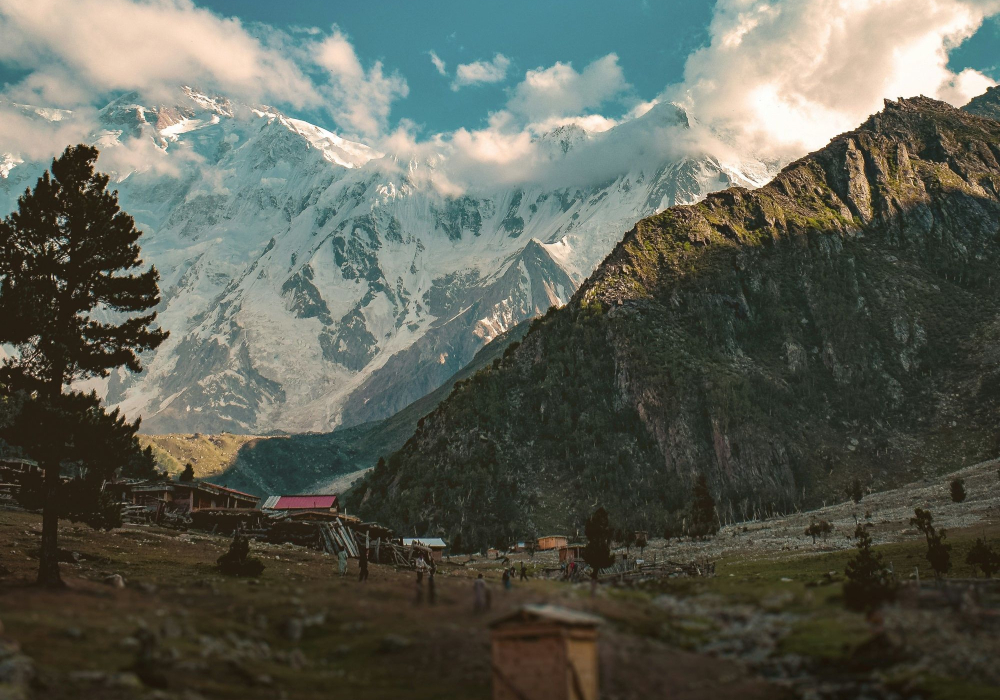 Nanga Parbat
Nanga Parbat
Key Features of Nanga Parbat:
-
Height: 8,126 meters (26,660 feet)
-
Location: Part of the Himalayas, in the Gilgit-Baltistan region
-
First Ascent: Accomplished in 1953 by Hermann Buhl
The mountain's Rupal Face is the highest mountain face in the world, rising an impressive 4,600 meters from base to summit. Climbers often face extreme weather conditions, crevasses, and sheer ice walls.
Despite its fearsome reputation, Nanga Parbat remains a coveted goal for many climbers, representing both challenge and beauty in equal measure.
Serene valleys
Pakistan is a land of breathtaking landscapes and stunning vistas. Its hidden natural beauty is often overlooked, but it holds countless treasures. Among these are the serene valleys, each offering a unique charm and tranquillity. These valleys are perfect for travellers seeking peace and natural beauty. Let's explore two of the most beautiful valleys in Pakistan.
Hunza Valley: A paradise on Earth
Hunza Valley, a paradise on Earth, is nestled in the Gilgit-Baltistan region. This valley is famous for its stunning scenery and vibrant culture. Surrounded by majestic mountains, Hunza offers a serene escape for nature lovers.
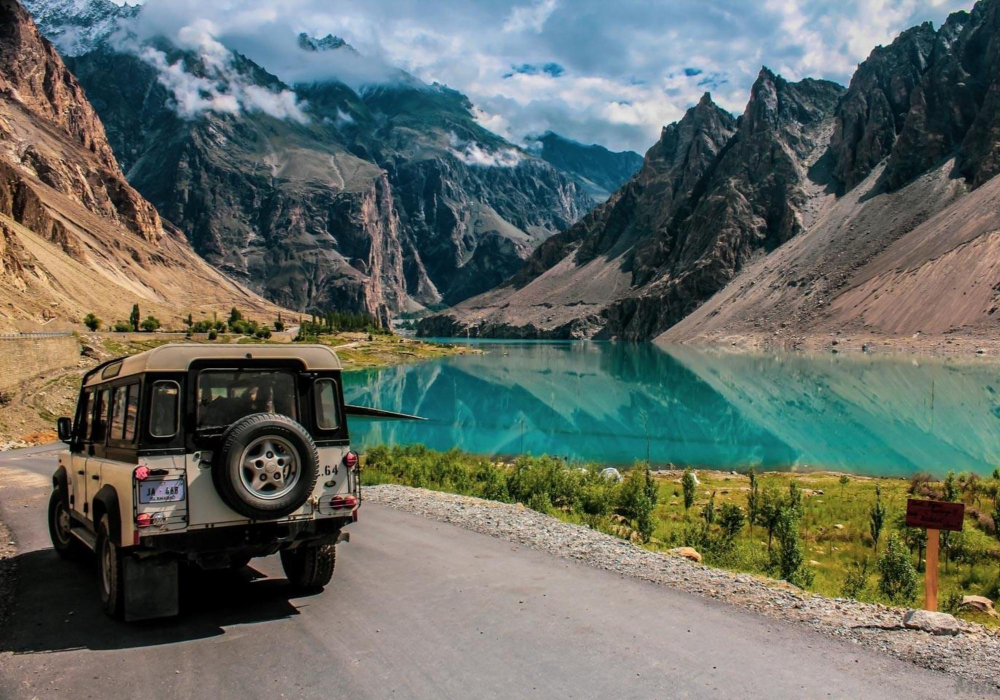 Hunza Valley. Photo credit: Guide To Pakistan
Hunza Valley. Photo credit: Guide To Pakistan
The valley is home to several picturesque villages, each with its own unique charm. Karimabad, the central town, offers a stunning view of the Rakaposhi mountain. Visitors can enjoy the local cuisine and explore ancient forts.
-
Altit Fort: A 900-year-old fort that showcases the history of the region.
-
Baltit Fort: Over 700 years old, this fort offers panoramic views of the valley.
The Hunza Valley is also famous for its fruit orchards. Apricots, apples, and cherries are abundant, especially in spring, and the colourful blossoms add to the valley's beauty.
Hunza's people are known for their hospitality and longevity. The valley is an ideal destination for trekking and adventure. The famous Hunza River flows through the valley, adding to its charm.
Swat Valley: The Switzerland of the East
Swat Valley, often called the Switzerland of the East, is located in the Khyber Pakhtunkhwa province. It is renowned for its lush green meadows and clear blue rivers, making it a haven for tourists and nature enthusiasts.
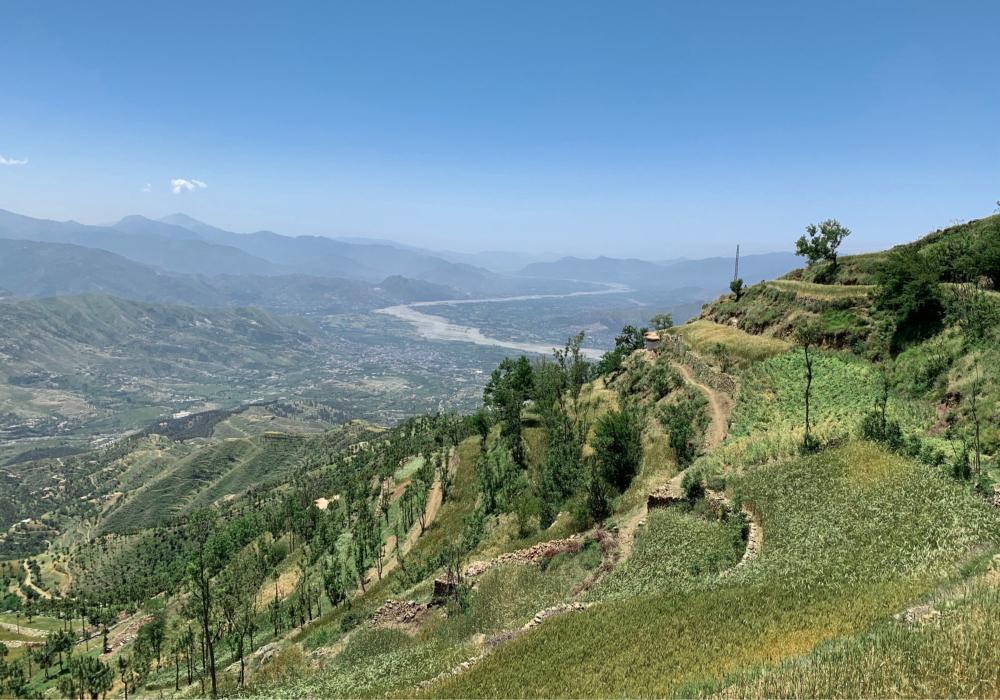 The view from the mountain to the Swat Valley in Pakistan
The view from the mountain to the Swat Valley in Pakistan
The valley is dotted with beautiful lakes and rivers. The Swat River runs through the valley, providing stunning views and opportunities for boating and fishing. Mingora, the largest city, serves as the gateway to this beautiful valley.
-
Malam Jabba: A famous ski resort, perfect for winter sports.
-
Kalam Valley: Known for its lush green landscapes and pleasant weather.
Swat Valley is rich in history and culture. The ancient Butkara Stupa is a testament to the region's Buddhist heritage. The valley also offers various trekking routes for adventure seekers.
Visitors can explore the Ushu Forest, a dense forest offering scenic trails and picnic spots. The valley's hospitality, combined with its natural beauty, makes it a must-visit destination.
Lush National Parks
Pakistan is home to some of the most breathtaking natural landscapes on Earth. Its lush national parks are a testament to this beauty. From verdant valleys to majestic mountains, these parks offer a sanctuary for diverse wildlife and a haven for nature lovers. Let’s explore some of the gems hidden within Pakistan’s national parks.
Khunjerab National Park: Wildlife haven
Khunjerab National Park is a paradise for wildlife enthusiasts. Located in the Gilgit-Baltistan region, it spans over 2,269 square kilometres and is renowned for its high-altitude scenery and rich biodiversity.
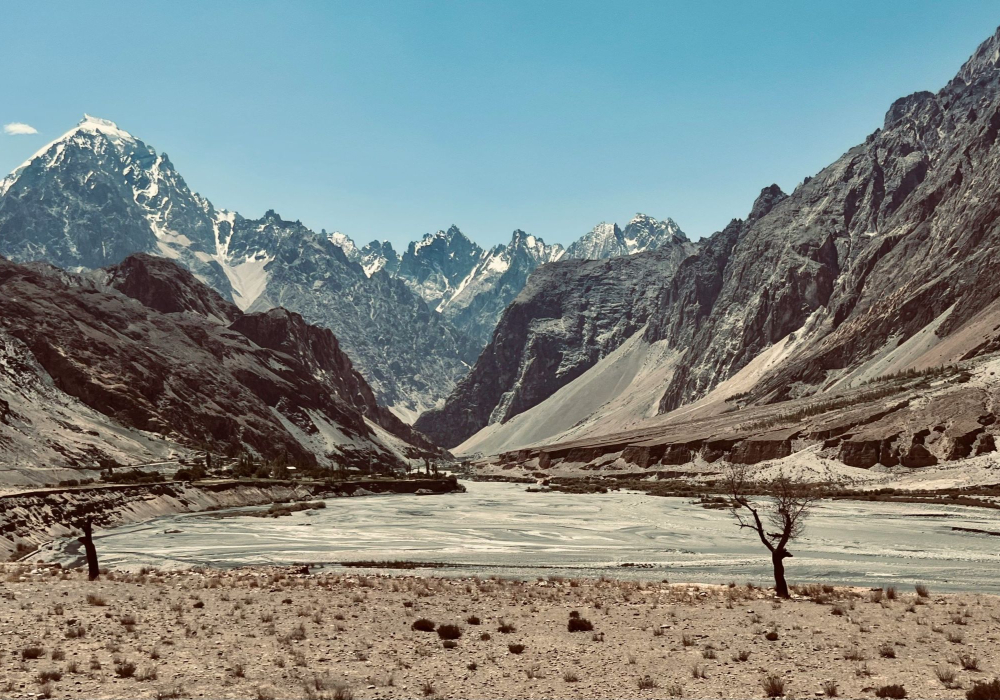 Khunjerab National Park
Khunjerab National Park
Wildlife in Khunjerab National Park:
-
Snow Leopards: One of the rarest big cats in the world.
-
Marco Polo Sheep: Known for their impressive curved horns.
-
Ibex: Graceful mountain goats that thrive in high altitudes.
Visitors often find themselves mesmerized by the park’s stunning landscapes. The park’s elevation ranges from 4,000 to 6,000 meters, offering dramatic views and unique flora.
Activities to enjoy:
-
Wildlife photography
-
Hiking and trekking
-
Camping under the stars
Khunjerab Pass, the world's highest paved international border crossing, is also located here. This pass connects Pakistan to China and offers breathtaking views of snow-capped peaks.
Fairy Meadows: A natural wonderland
Fairy Meadows is a lush alpine meadow located near the base of Nanga Parbat, the world’s ninth-highest mountain. This enchanting place is famous for its stunning beauty and serene environment.
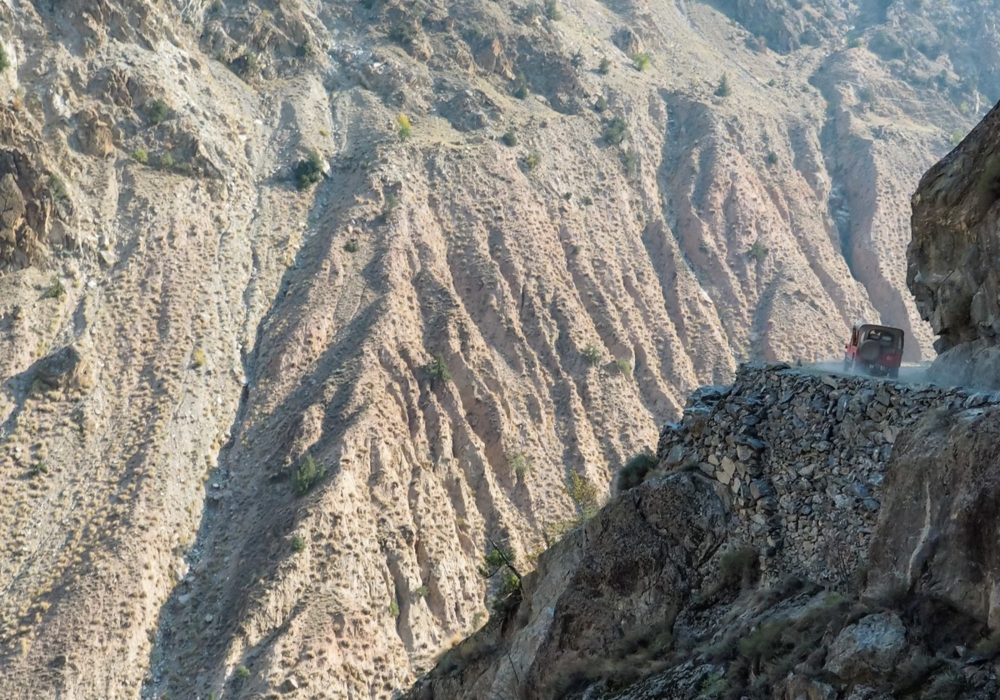 A Jeep ride along a dangerous road to Fairy Meadows, Nanga Parbat, Karakoram, northern area of Pakistan
A Jeep ride along a dangerous road to Fairy Meadows, Nanga Parbat, Karakoram, northern area of Pakistan
Highlights of Fairy Meadows:
-
Nanga Parbat: Known as the “Killer Mountain” due to its challenging climbs.
-
Dense Forests: Home to ancient pine trees and diverse wildlife.
-
Rivers and Streams: Crystal-clear waters flow through the meadows.
Fairy Meadows offers an ideal setting for camping, with cozy wooden huts available for visitors. The area perfectly views Nanga Parbat’s towering peak, especially during sunrise and sunset.
Things to do:
-
Nature walks
-
Photography
-
Bonfire gatherings
Visitors embark on an adventurous jeep ride followed by a scenic hike to reach Fairy Meadows. The journey is as captivating as the destination, with every step revealing more of nature’s splendour.
Crystal clear lakes
Pakistan is a treasure trove of natural beauty. Among its many wonders, the crystal clear lakes stand out. Nestled in the mountains, these lakes offer breathtaking views and serene experiences. Let's explore two of these stunning lakes.
Saif-ul-Malook: A lake of legends
Saif-ul-Malook is one of the most famous lakes in Pakistan. It is located near the town of Naran in the Kaghan Valley. Snow-capped peaks and lush green meadows surround this lake, and the water is so clear that it mirrors the sky.
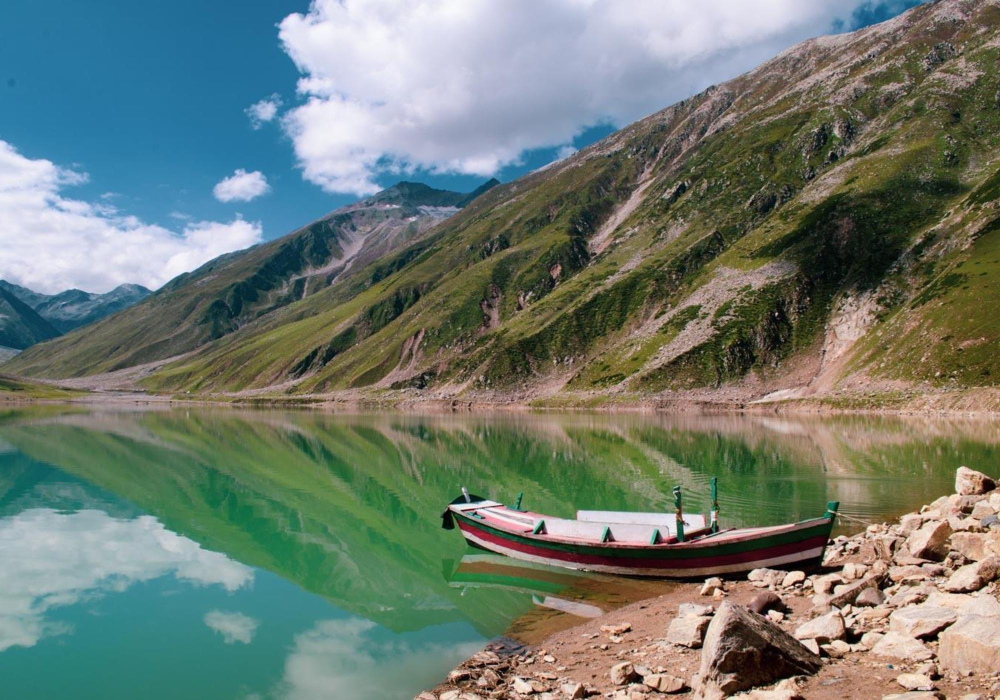 Saif-ul-Malook Lake. Photo credit: Guide To Pakistan
Saif-ul-Malook Lake. Photo credit: Guide To Pakistan
Why visit Saif-ul-Malook?
-
Legendary stories: The lake is named after Prince Saif-ul-Malook. It's said that he fell in love with a fairy here.
-
Scenic views: The lake offers panoramic views of the surrounding mountains.
-
Boating: Visitors can enjoy a peaceful boat ride on its crystal clear waters.
-
Photography: It's a paradise for photographers.
Here's a quick table to help you plan your visit:
|
Best time to visit |
How to get there |
Activities |
|---|---|---|
|
June to September |
Drive from Naran |
Boating, Hiking, Photography |
Ratti Gali: Hidden gem of Azad Kashmir
Ratti Gali Lake is a hidden gem in Azad Kashmir. Its water is so clear that you can see the sky and the mountains reflected in it. Lush green meadows and towering peaks surround it.
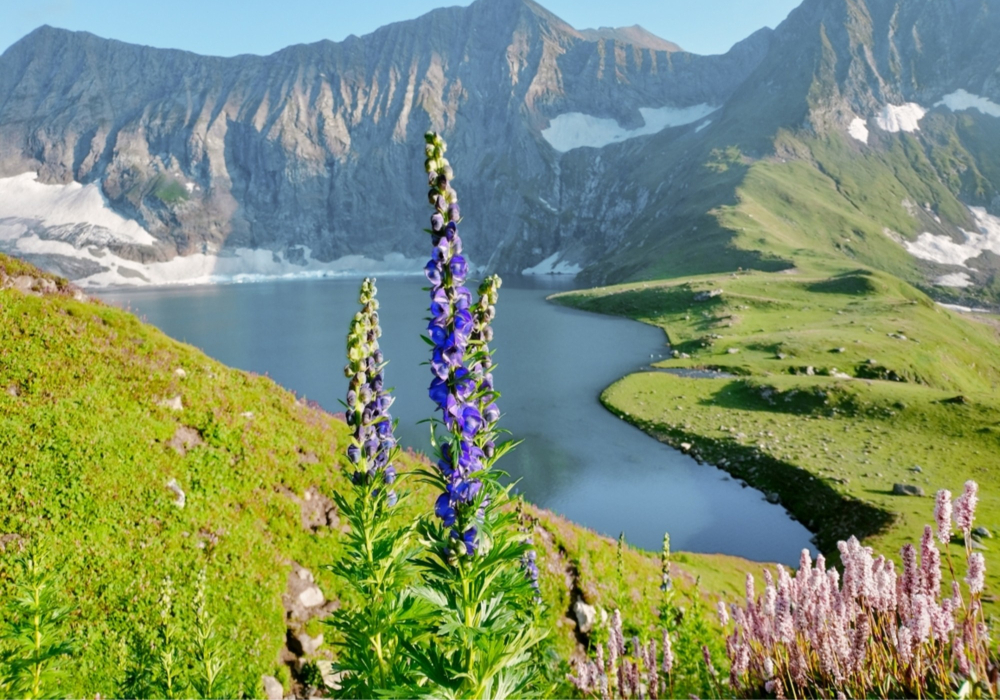 Heart shape Beautiful Ratti Gali Lake, Azad Kashmir Pakistan. Photo credit: Muhammad Shakeel Asghar
Heart shape Beautiful Ratti Gali Lake, Azad Kashmir Pakistan. Photo credit: Muhammad Shakeel Asghar
Why visit Ratti Gali?
-
Secluded beauty: It's less crowded compared to other tourist spots.
-
Hiking trails: Beautiful trails are leading to the lake.
-
Camping: It's a perfect spot for camping under the stars.
-
Wildlife: You might spot some unique flora and fauna.
Here's a quick table to help you plan your visit:
|
Best Time to Visit |
How to Get There |
Activities |
|---|---|---|
|
July to September |
Drive from Dowarian, then hike |
Hiking, Camping, Wildlife Watching |
Breathtaking deserts
Pakistan, a land of diverse landscapes, offers more than just majestic mountains and serene valleys. The country's deserts, with their unique charm, are equally captivating. Breathtaking deserts like Thar and Cholistan are expansive and rich in culture and history. These arid regions are home to vibrant communities and ancient traditions that enchant every visitor.
Thar Desert: An oasis of culture
The Thar Desert, also known as the Great Indian Desert, stretches across Pakistan and India. In Pakistan, it covers the southeastern part of Sindh province. This desert is not just sand and dunes; it's a vibrant tapestry of culture and life. The people of Thar are known for their colourful attire, traditional music, and dance.
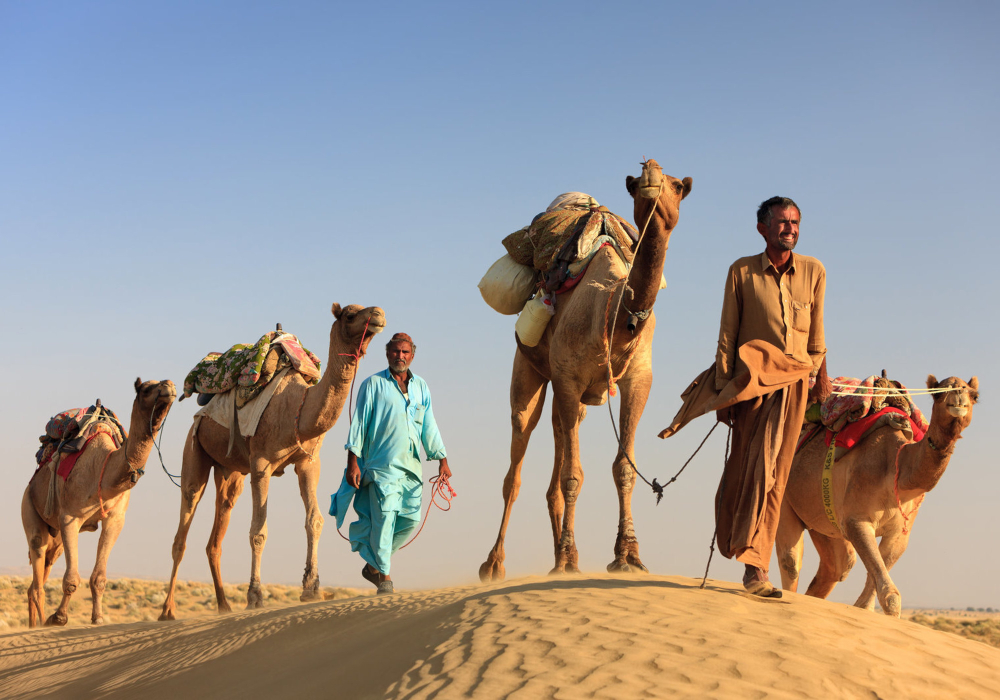 An unidentified camel man is leading his camels across the Thar Desert near Jaisalmer on November 28, 2012, in Sam, Rajasthan, India.
An unidentified camel man is leading his camels across the Thar Desert near Jaisalmer on November 28, 2012, in Sam, Rajasthan, India.
Here are some highlights of the Thar Desert:
-
Traditional Festivals: The Thar Desert hosts numerous festivals showcasing local music, dance, and crafts.
-
Unique Wildlife: Despite its arid climate, the Thar Desert is home to various species of flora and fauna, including the endangered Great Indian Bustard.
-
Historic Sites: The desert boasts ancient forts and ruins, such as the Umerkot Fort, which tell tales of a rich history.
Visitors can experience the local culture through camel rides, traditional food, and interacting with the friendly locals. The Thar Desert is truly an oasis of culture amidst the sands.
Cholistan Desert: Land of rich heritage
The Cholistan Desert lies in the Bahawalpur region of Punjab. Known for its historical significance, Cholistan is a treasure trove of ancient heritage. The desert's name originates from the Turkish word 'Chol,' meaning desert, and it covers an area of about 26,000 square kilometres.
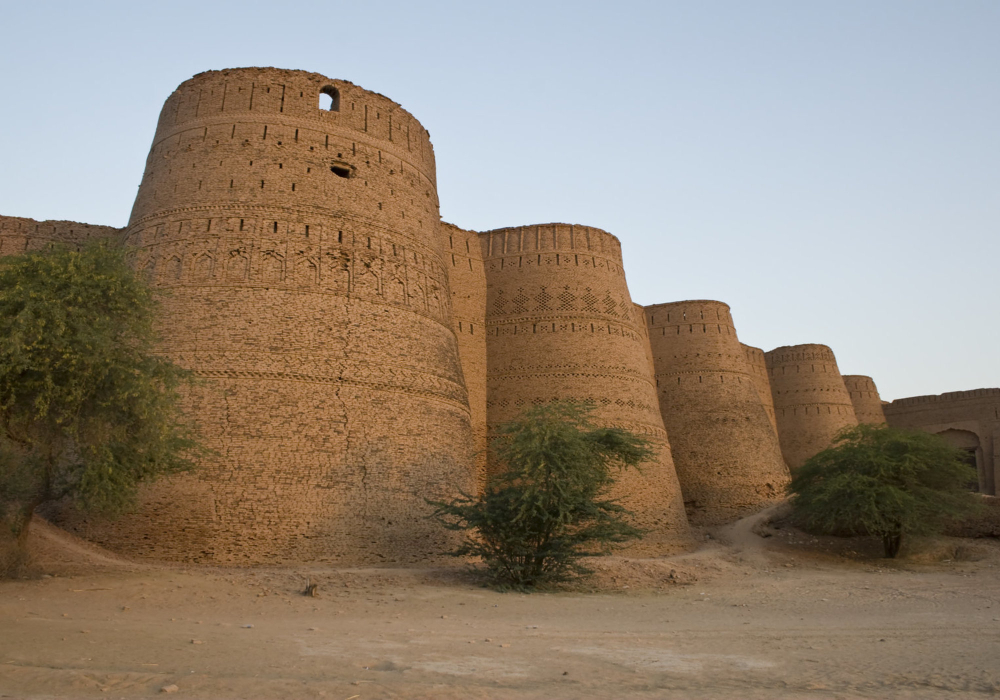 Derawar Fort
Derawar Fort
Key attractions in Cholistan Desert include:
-
Derawar Fort: A massive square fortress with 40 bastions, Derawar Fort is a sight to behold. It's a testament to the region's glorious past.
-
Jeep Rally: The annual Cholistan Desert Jeep Rally attracts participants from around the world, making it a thrilling event for adventure seekers.
-
Camel Caravan: Experience the traditional way of life with camel caravans that traverse the desert, providing a glimpse into the nomadic lifestyle.
Cholistan is also known for its handicrafts, including beautifully woven carpets, intricate pottery, and traditional jewelry. The desert's rich heritage and vibrant culture make it a must-visit destination for anyone exploring Pakistan's natural beauty.
Enchanting rivers
Pakistan is a land of stunning landscapes and enchanting rivers. These rivers provide breathtaking views and play a crucial role in the country's ecosystem. Each river has a unique charm, from the mighty Indus to the serene Neelum. Let’s explore Pakistan's hidden natural beauty through its enchanting rivers.
Indus River: The lifeline of Pakistan
The Indus River is often called Pakistan's lifeline. This massive river runs through the heart of the country, providing water for agriculture and daily use. Originating from the Tibetan Plateau, it flows through Pakistan before emptying into the Arabian Sea.
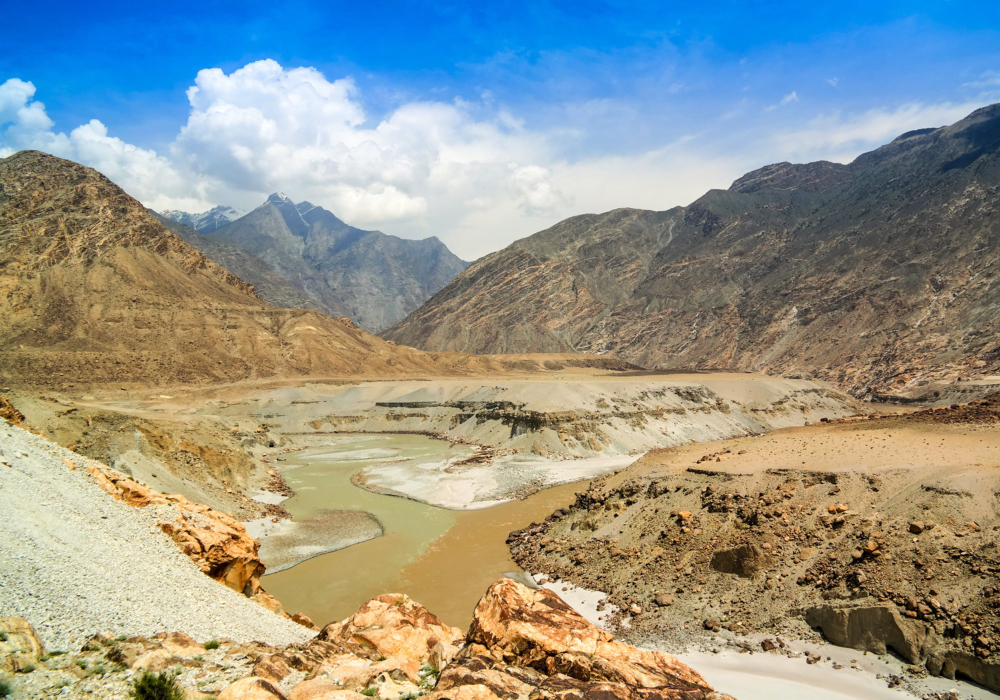 Confluence of Gilgit and Indus rivers, Gilgit-Baltistan, Pakistan
Confluence of Gilgit and Indus rivers, Gilgit-Baltistan, Pakistan
The Indus River supports numerous cities and towns along its banks. It is a vital resource for Pakistan's economy, especially in terms of agriculture. The river's basin is home to some of the most fertile lands, making it a crucial area for farming.
-
Length: Approximately 3,180 kilometres
-
Major Tributaries: Jhelum, Chenab, Ravi, Sutlej, Beas
-
Key Cities Along the River: Karachi, Hyderabad, Sukkur
Tourists can enjoy various activities along the Indus River. Boating, fishing, and bird watching are popular pastimes. The river's scenic beauty attracts photographers and nature enthusiasts from around the world.
Another fascinating aspect of this river is the Indus Delta. This area is rich in biodiversity and is home to several species of birds, fish, and plants. The delta provides a unique ecosystem that supports both wildlife and human life.
Neelum River: A blue paradise
The Neelum River is often referred to as a blue paradise. Its crystal-clear blue waters flow through the picturesque Neelum Valley in Azad Kashmir. This river is famous for its stunning beauty and serene environment.
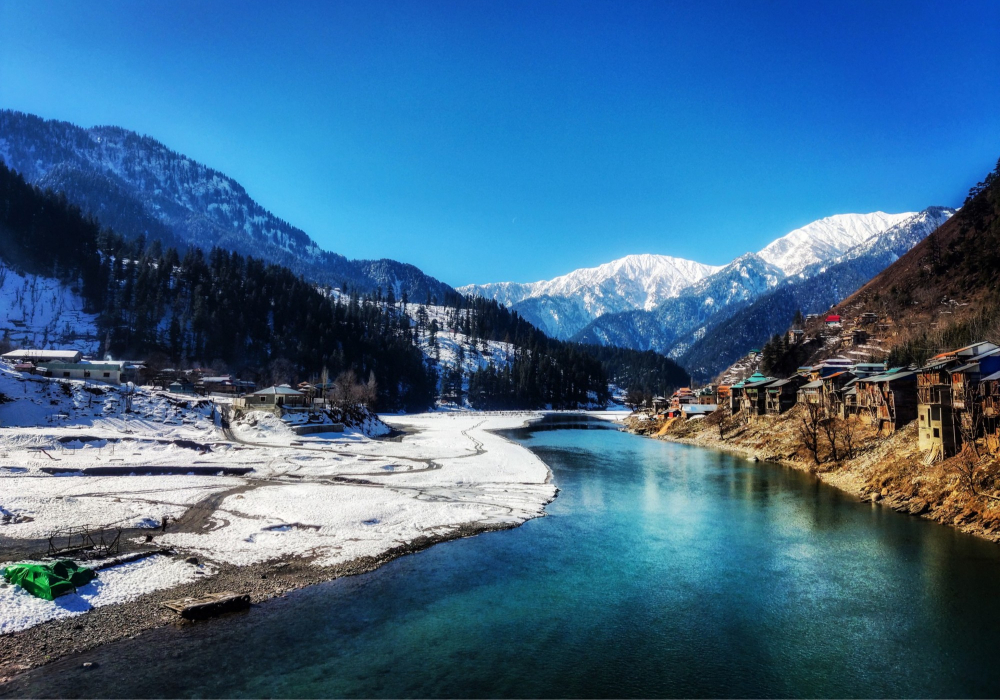 Neelum River
Neelum River
Fishing and boating are popular activities on the Neelum River. The river is home to various fish species, making it a favourite spot for anglers. Boating on the river provides a peaceful and relaxing experience.
-
Length: Approximately 245 kilometers
-
Key Locations: Keran, Sharda, Athmuqam
-
Attractions: Waterfalls, lush green valleys, snow-capped mountains
The river flows through several charming villages and towns. Keran and Sharda are among the most popular tourist destinations along the Neelum River. Visitors can enjoy the local culture and hospitality while taking in the breathtaking views.
Wildlife enthusiasts will find the Neelum River area a haven. The region is home to various species of birds, mammals, and plants. The river and its surroundings offer a perfect environment for nature lovers to explore and appreciate.
The Neelum River is not just a feast for the eyes; it also provides a source of livelihood for many locals. Fishing and tourism are major industries in this region, supporting the local economy and communities.
Vibrant flora and fauna
Pakistan, a land of diverse landscapes, holds a treasure trove of natural beauty waiting to be explored. The vibrant flora and fauna stand out among its many wonders, offering a glimpse into the country’s rich biodiversity. From towering mountains to lush valleys, Pakistan’s natural habitats are home to unique wildlife species and endemic plant life that captivate nature enthusiasts and researchers alike.
Unique wildlife species
Pakistan boasts an impressive array of unique wildlife species. The country’s varied ecosystems provide a haven for many animals, some of which are found nowhere else in the world.
 Snow leopard portrait shot in Khunjerab National Park, Gilgit Baltistan, Pakistan. Photo credit: Dr. Ashhad Ali Khan Suri
Snow leopard portrait shot in Khunjerab National Park, Gilgit Baltistan, Pakistan. Photo credit: Dr. Ashhad Ali Khan Suri
In the northern regions, the majestic snow leopard roams the high-altitude ranges. This elusive big cat symbolizes the rugged beauty of the Himalayas and the Karakoram. In the western deserts, the Indian pangolin is a rare and fascinating mammal known for its protective keratin scales.
The following table highlights some of Pakistan's unique wildlife species:
|
Species |
Habitat |
|---|---|
|
Snow leopard |
Northern Mountain Ranges |
|
Indian pangolin |
Western Deserts |
|
Markhor |
Mountainous Regions |
|
Indus river dolphin |
Indus River |
Another remarkable species is the Markhor, Pakistan’s national animal. It thrives in mountainous regions and is known for its striking spiral horns. The endangered Indus River dolphin swims in the river's waters, a testament to the river’s ecological significance.
Endemic plant life
Pakistan is also home to a rich variety of endemic plant life. These plants have adapted to the country’s diverse climates and terrains, ranging from coastal areas to alpine zones.
One such species is the deodar cedar, known as the ‘tree of gods. ' Found in the western Himalayan range, this towering tree is revered for its durable wood and aromatic properties. The Juniper forests of Balochistan are among the oldest in the world, showcasing ancient trees that have withstood the test of time.
Here is a list of some notable endemic plants in Pakistan:
-
Deodar cedar
-
Juniper
-
Himalayan blue poppy
-
Rhododendron
The Himalayan Blue Poppy is another enchanting plant that adds a splash of colour to the northern landscapes. Its vibrant blue petals attract pollinators, which is crucial in the local ecosystem. The Rhododendron, with its bright blossoms, is commonly found in the forests of Azad Kashmir and Gilgit-Baltistan.
These endemic plants enhance Pakistan's natural beauty and offer unique opportunities for ecological research and conservation efforts.
Cultural landscapes
Explore Pakistan's rich cultural landscapes to discover its hidden natural beauty. Pakistan is a land where history meets nature, offering breathtaking views alongside historical significance. From ancient ruins to vibrant festivals, the cultural landscapes of Pakistan are a treasure trove waiting to be explored.
Historical sites amidst nature
Pakistan is home to many historical sites set in beautiful natural surroundings. These sites offer visitors a unique blend of history and natural beauty. Explore the ancient ruins of Taxila, a UNESCO World Heritage site surrounded by lush greenery. Walk through the remnants of a once-thriving Buddhist civilization while enjoying the serene environment.
Another gem is the Rohtas Fort, nestled in the hills of Punjab. Built-in the 16th century, this fort offers stunning views of the surrounding landscape. It’s a perfect spot for history buffs and nature lovers alike.
Here are some must-visit historical sites in Pakistan:
-
Taxila: Ancient ruins in a green valley
-
Rohtas Fort: Majestic fort with scenic views
-
Mohenjo-Daro: Ancient city by the Indus River
-
Takht-i-Bahi: Buddhist monastery on a hilltop
These sites offer a glimpse into the past and provide a peaceful retreat into nature. Visit these historical landmarks set amidst breathtaking landscapes to experience the best of both worlds.
Festivals celebrating nature
Pakistan's festivals are vibrant celebrations of its natural beauty. Each region has unique festivals showcasing the local culture and natural surroundings. One such festival is the Shandur Polo Festival, held in the Shandur Pass. This event, often called the "Roof of the World," features a thrilling polo match surrounded by stunning mountain views.
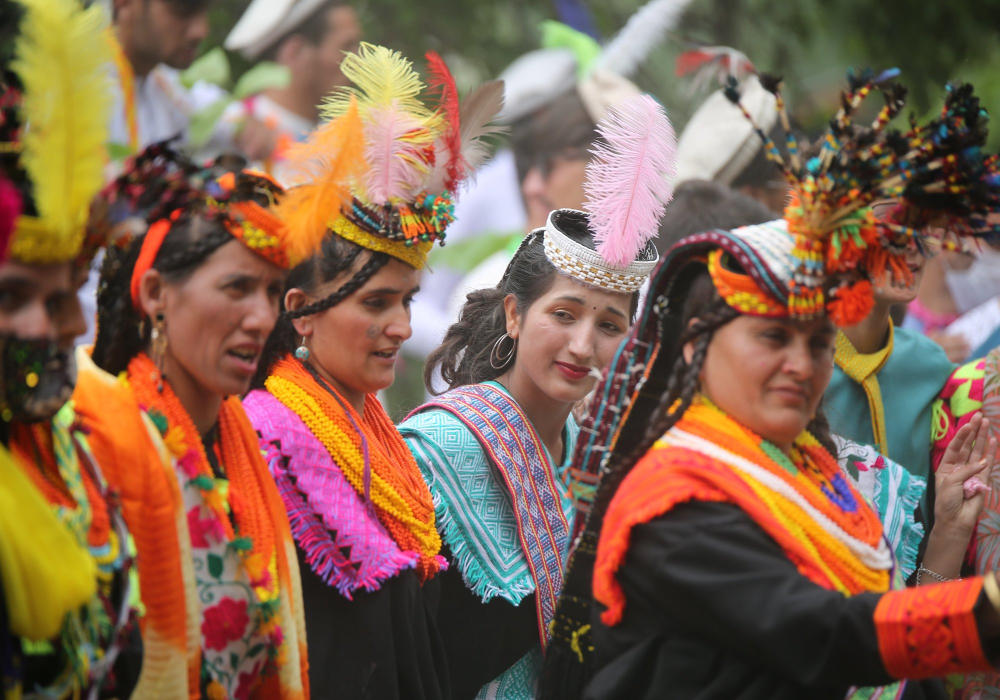 Kalash Tribe Hindu Kush Annual Spring (Chilam Joshi) Festival. Photo credit: Shahzadali (Shutterstock)
Kalash Tribe Hindu Kush Annual Spring (Chilam Joshi) Festival. Photo credit: Shahzadali (Shutterstock)
Another notable festival is the Kalash Spring Festival, celebrated by the Kalash people in the Chitral Valley. This festival marks the arrival of spring and is filled with traditional music, dance, and colourful attire. The scenic valley backdrop makes it a must-see event.
Here are some of the key festivals celebrating nature in Pakistan:
|
Festival |
Location |
Highlights |
|---|---|---|
|
Shandur Polo Festival |
Shandur Pass |
Polo matches, mountain views |
|
Kalash Spring Festival |
Chitral Valley |
Traditional dance, music |
|
Chilam Joshi Festival |
Kalash Valleys |
Spring celebration, cultural events |
These festivals are not just events but spectacular experiences that bring together culture and nature. Witness Pakistan's vibrant traditions and stunning landscapes by attending these unique festivals.
Pakistan's natural beauty remains unmatched, and we await your discovery. From majestic mountains to serene lakes, the landscapes will captivate you. Embrace the adventure and explore Pakistan's hidden gems. Plan your trip today and experience breathtaking scenery like never before. Discover the magic that lies within Pakistan's untouched natural wonders.

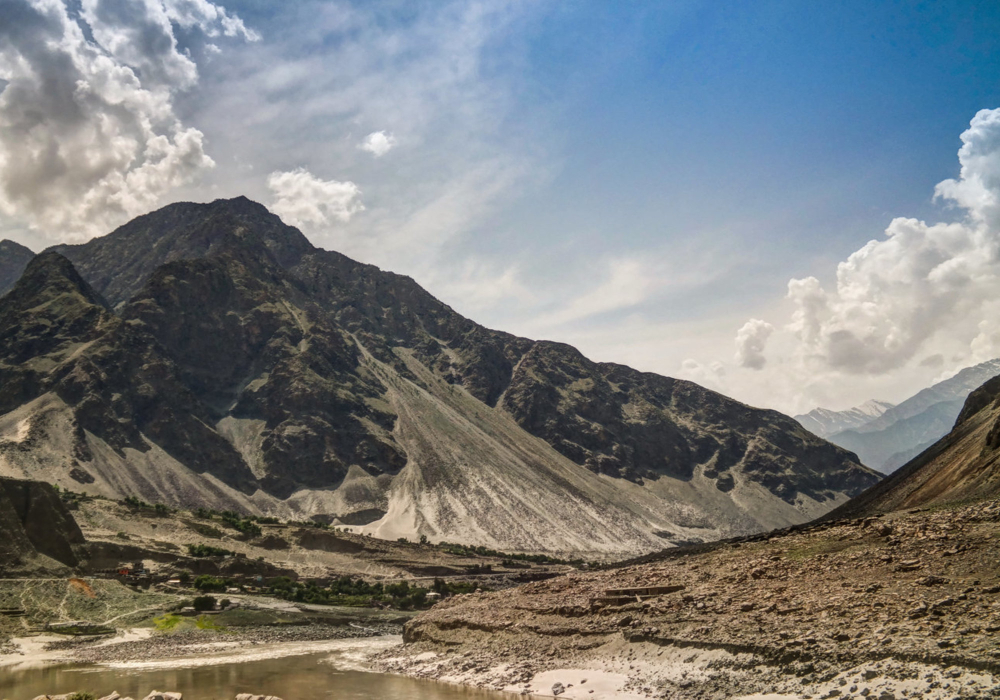

Comments powered by CComment